
The Völsunga saga is a legendary saga, a late 13th-century prose rendition in Old Norse of the origin and decline of the Völsung clan. It is one of the most famous legendary sagas and an example of a "heroic saga" that deals with Germanic heroic legend.

"Beauty and the Beast" is a fairy tale written by French novelist Gabrielle-Suzanne Barbot de Villeneuve and published in 1740 in La Jeune Américaine et les contes marins. Her lengthy version was abridged, rewritten, and published by French novelist Jeanne-Marie Leprince de Beaumont in 1756 in Magasin des enfants to produce the version most commonly retold. Later, Andrew Lang retold the story in Blue Fairy Book, a part of the Fairy Book series, in 1889. The fairy tale was influenced by Ancient Greek stories such as "Cupid and Psyche" from The Golden Ass, written by Lucius Apuleius Madaurensis in the second century AD, and "The Pig King", an Italian fairytale published by Giovanni Francesco Straparola in The Facetious Nights of Straparola around 1550.
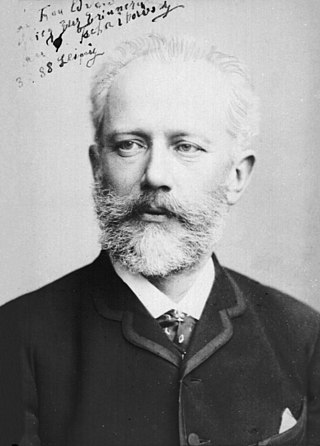
The Nutcracker, Op. 71, is an 1892 two-act classical ballet by Pyotr Ilyich Tchaikovsky, set on Christmas Eve at the foot of a Christmas tree in a child's imagination. The plot is an adaptation of E. T. A. Hoffmann's 1816 short story The Nutcracker and the Mouse King. The ballet's first choreographer was Marius Petipa, with whom Tchaikovsky had worked three years earlier on The Sleeping Beauty, assisted by Lev Ivanov. Although the complete and staged The Nutcracker ballet was not as successful as had been the 20-minute Nutcracker Suite that Tchaikovsky had premiered nine months earlier, The Nutcracker soon became popular.
Illuga saga Gríðarfóstra is a fornaldarsaga about a young Dane named Illugi who delivers a female troll and her daughter from a curse. The earliest manuscript dates from the first half of the 16th century.
No Rest for the Wicked is a fantasy webcomic by Andrea L. Peterson. The characters are loosely based on characters from traditional fairy tales, including those by Hans Christian Andersen, Charles Perrault, and the Brothers Grimm. The plot revolves around a princess who has been an insomniac since the disappearance of the moon and her journey to restore the moon to the sky. As of August 2007 it is on the fourth chapter, with a total of 200 pages thus far. The story has a generally elegiac mood, an undercurrent of sadness leavened with humor throughout. No Rest for the Wicked is now also available in Italian, German, and Japanese.
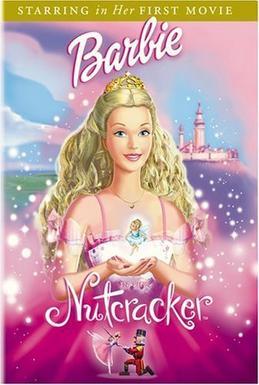
Barbie in the Nutcracker is a 2001 computer-animated fantasy film co-produced by Mainframe Entertainment and Mattel Entertainment, and distributed by Artisan Home Entertainment.

"East of the Sun and West of the Moon" is a Norwegian fairy tale. It was included by Andrew Lang in The Blue Fairy Book (1889).

"The Nutcracker and the Mouse King" is a story written in 1816 by Prussian author E. T. A. Hoffmann, in which young Marie Stahlbaum's favorite Christmas toy, the Nutcracker, comes alive and, after defeating the evil Mouse King in battle, whisks her away to a magical kingdom populated by dolls. The story was originally published in Berlin in German as part of the collection Kinder-Märchen, Children's Stories, by In der Realschulbuchhandlung. In 1892, the Russian composer Pyotr Ilyich Tchaikovsky and choreographers Marius Petipa and Lev Ivanov turned Alexandre Dumas' adaptation of the story into the ballet The Nutcracker.
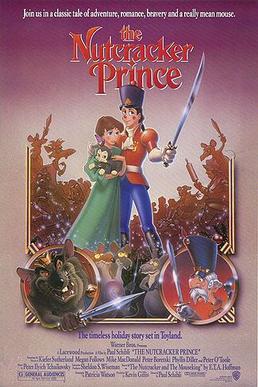
The Nutcracker Prince is a 1990 Canadian animated romance fantasy film directed by Paul Schibli based on the screenplay by Patricia Watson. It is a retelling of E. T. A. Hoffmann's 1816 short story "The Nutcracker and the Mouse King" and Marius Petipa & Pyotr Ilyich Tchaikovsky's 1892 ballet The Nutcracker, about a girl named Clara who is gifted a special nutcracker by her uncle. The gift draws her into a world of magic and wonder, and she brings about the conclusion to the legend of The Nutcracker, Prince of the Dolls: a young man named Hans who was transformed into a nutcracker by mice, and can only break the spell if he slays the Mouse King. The film stars Kiefer Sutherland as Hans, Megan Follows as Clara, Mike MacDonald as the evil Mouse King, Peter O'Toole as Pantaloon, an old soldier, Phyllis Diller as the Mouse Queen, and Peter Boretski as Uncle Drosselmeier.
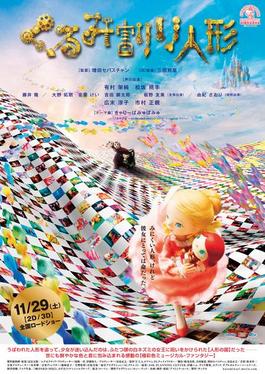
Nutcracker Fantasy is a Japanese-American stop motion animated film produced by Sanrio, very loosely based on Tchaikovsky's 1892 ballet The Nutcracker and E.T.A. Hoffmann's 1816 story "The Nutcracker and the Mouse King". It is directed by Takeo Nakamura and written by Shintaro Tsuji, Eugene A. Fournier and Thomas Joachim. It was officially released in Japan on March 3, 1979 and later in the United States on July 6, 1979. The film was nominated for the 1980 Saturn Award for Best Fantasy Film and the 1980 Young Artist Award for Best Motion Picture featuring youth and won the 1980 Young Artist Award for Best Musical Entertainment.

Aslan is a major character in C. S. Lewis's The Chronicles of Narnia series. Unlike any other character in the Narnian series, Aslan appears in all seven chronicles. Aslan is depicted as a talking lion and is described as the King of Beasts, the son of the Emperor-Over-the-Sea, and the King above all High Kings in Narnia.
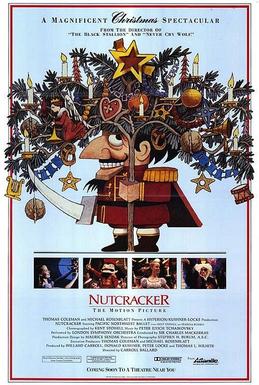
Nutcracker: The Motion Picture, also known as Pacific Northwest Ballet's Nutcracker or simply Nutcracker, is a 1986 American Christmas performing arts film produced by Pacific Northwest Ballet in association with Hyperion Pictures and Kushner/Locke, and released theatrically by Atlantic Releasing Corporation. It is a film adaptation of 1892 ballet The Nutcracker by Pyotr Ilyich Tchaikovsky and the 1816 short story "The Nutcracker and the Mouse King" by E. T. A. Hoffmann.

Shadow and Bone is a young adult fantasy adventure and the debut novel written by American author Leigh Bardugo. It was published by Macmillan Publishers on June 5, 2012. The novel follows Alina Starkov, a teenage orphan who grows up in the Russia-inspired land of Ravka when, one day, she unexpectedly harnesses a power she never knew she had, becoming a target of intrigue and violence. It is the first book in the Shadow and Bone trilogy, followed by Siege and Storm and Ruin and Rising. It is also the basis for the Netflix adaptation, Shadow and Bone, which premiered in April 2021.

Leigh Bardugo is an American fantasy author. She is best known for her young adult Grishaverse novels, which include the Shadow and Bone trilogy, and the Six of Crows and King of Scars duologies. She also received acclaim for her paranormal fantasy adult debut, Ninth House. The Shadow and Bone and Six of Crows series have been adapted into Shadow and Bone by Netflix and Ninth House will be adapted by Amazon Studios; Bardugo is an executive producer on both works.

The Nutcracker and the Four Realms is a 2018 American fantasy adventure film directed by Lasse Hallström and Joe Johnston and produced by Mark Gordon and Larry Franco, from a screenplay by Ashleigh Powell. Co-produced by Walt Disney Pictures and The Mark Gordon Company, it is a retelling of E. T. A. Hoffmann's 1816 short story "The Nutcracker and the Mouse King", as well as of Marius Petipa and Pyotr Ilyich Tchaikovsky's 1892 ballet The Nutcracker, about a young girl who is gifted a locked egg from her deceased mother and sets out in a magical land to retrieve the key. The film stars Keira Knightley, Mackenzie Foy, Eugenio Derbez, Matthew Macfadyen, Richard E. Grant, Misty Copeland, Helen Mirren, and Morgan Freeman.
Prince Wolf is a Danish fairy tale collected by Svend Grundtvig in his book Danske Folkeaeventyr. It is related to the international cycle of the Animal as Bridegroom or The Search for the Lost Husband. Tales with similar motifs and elements are found across Denmark and Scandinavia.













